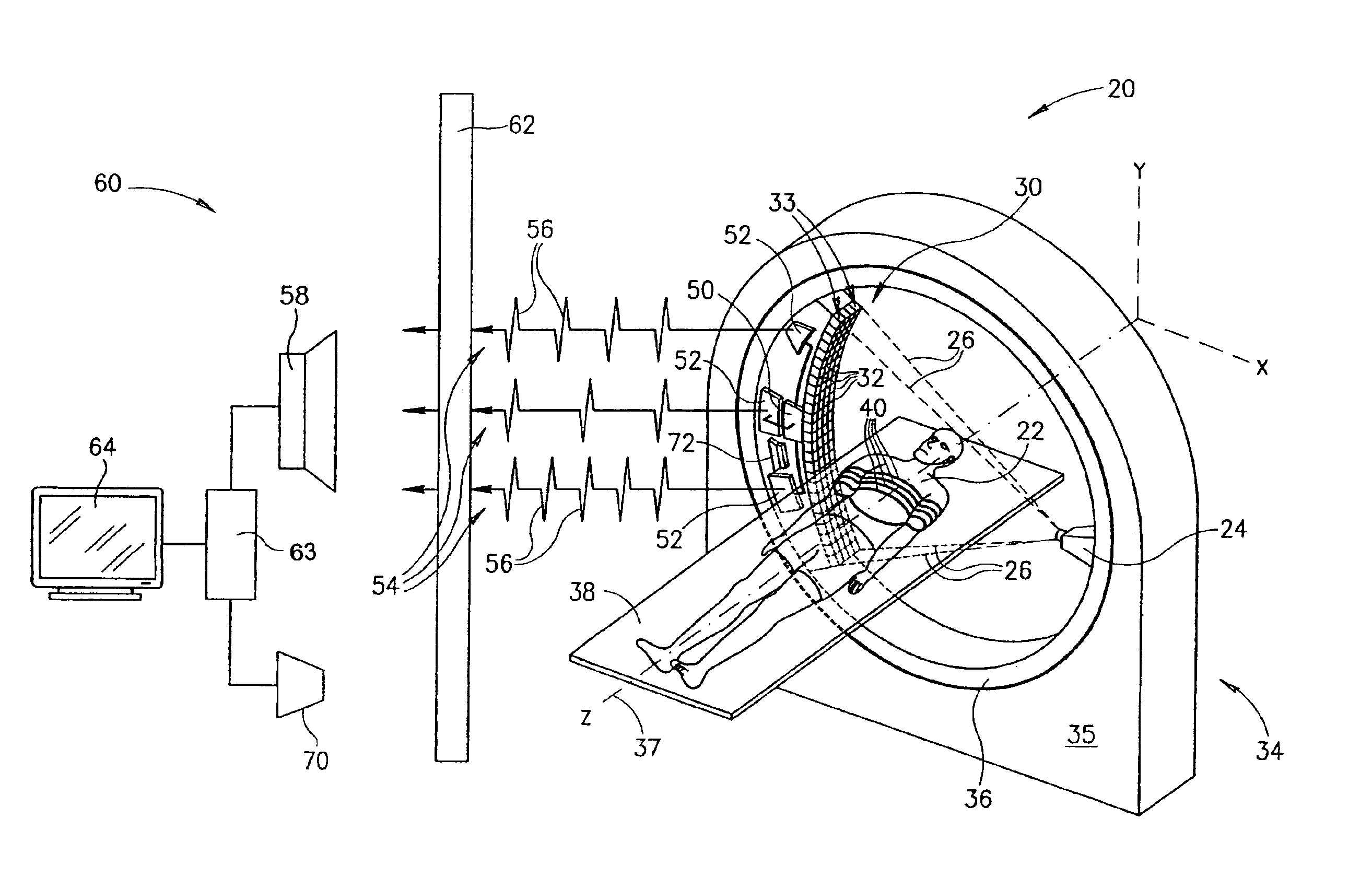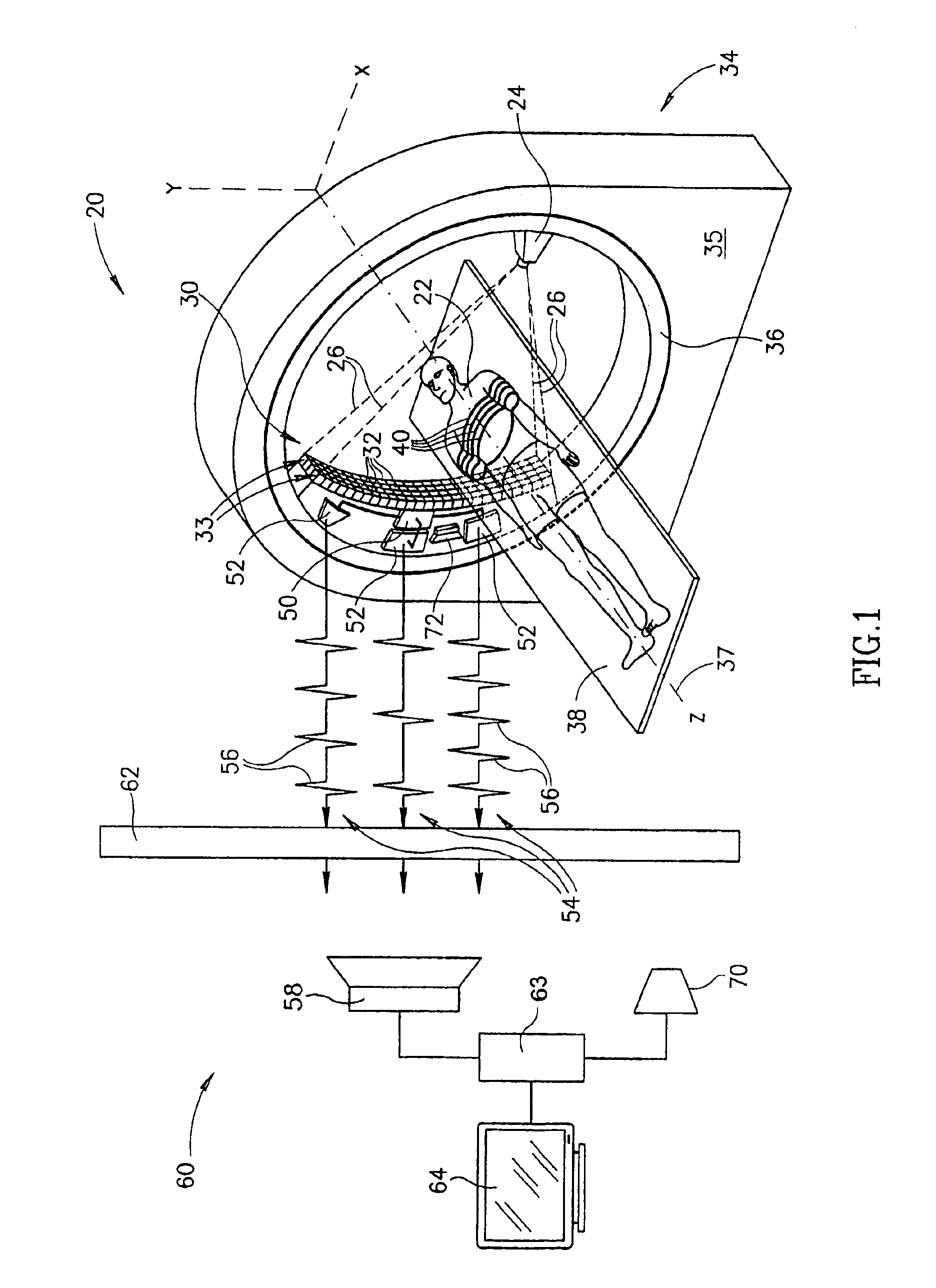Wireless data transmission in CT-scanners
a technology of ct scanners and data transmission, applied in tomography, instruments, applications, etc., can solve the problems of inability to reliably transmit data in free space using electromagnetic waves, general noise in the immediate environment of the rotor, and inability to reliably detect contact slip rings, etc., to achieve the effect of simple gantry construction and easy detection
- Summary
- Abstract
- Description
- Claims
- Application Information
AI Technical Summary
Benefits of technology
Problems solved by technology
Method used
Image
Examples
Embodiment Construction
[0049]FIG. 1 schematically shows a third generation CT-scanner 20 comprising a THIM data transmission system, in accordance with an embodiment of the present invention. In FIG. 1, by way of example CT-scanner 20 is shown imaging a region of the chest of a patient 22. Dimensions of components and features shown in the FIGURE are chosen for convenience and clarity of presentation and are not necessarily shown to scale.
[0050]CT-scanner 20 comprises an X-ray source 24 controllable to provide a fan-beam schematically indicated by dashed lines 26 and an array 30 of X-ray detectors 32 mounted opposite the X-ray source for sensing X-rays in the fan-beam. CT-scanner 20 is assumed, by way of example to be a multislice imager that simultaneously images a plurality of four slices of a region of the body of a patient (patient 22 in FIG. 1) being imaged with the CT-scanner. Detectors 32 in array 30 are therefore configured in a plurality of four contiguous curved rows 33 of the detectors. CT-scan...
PUM
 Login to View More
Login to View More Abstract
Description
Claims
Application Information
 Login to View More
Login to View More - R&D
- Intellectual Property
- Life Sciences
- Materials
- Tech Scout
- Unparalleled Data Quality
- Higher Quality Content
- 60% Fewer Hallucinations
Browse by: Latest US Patents, China's latest patents, Technical Efficacy Thesaurus, Application Domain, Technology Topic, Popular Technical Reports.
© 2025 PatSnap. All rights reserved.Legal|Privacy policy|Modern Slavery Act Transparency Statement|Sitemap|About US| Contact US: help@patsnap.com


